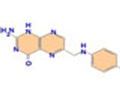Using lower levels of vitamin E supplements, such as 100 to 400 I.U. a day, have shown benefits in reducing cardiovascular disease risk.
New research has demonstrated that the levels of this micronutrient necessary to reduce oxidative stress are far higher than those that have been commonly used in clinical trials.
This could help explain the inconsistent results of many vitamin E trials for its value in preventing or treating cardiovascular disease, said Balz Frei, professor and director of the Linus Pauling Institute at Oregon State University, and co-author of the new commentary along with Jeffrey Blumberg, at the Jean Mayer USDA Human Nutrition Research Center on Aging at Tufts University.“The methodology used in almost all past clinical trials of vitamin E has been fatally flawed,” said Frei, one of the world’s leading experts on antioxidants and disease. “These trials supposedly addressed the hypothesis that reducing oxidative stress could reduce cardiovascular disease. But oxidative stress was never measured in these trials, and therefore we don’t know whether it was actually reduced or not. The hypothesis was never really tested.”
The level of vitamin E that clearly can be shown to reduce oxidative stress, new research is showing, is far higher than the level that could be obtained in any diet, and is also above the “tolerable upper intake level” outlined by the Institute of Medicine, which is 1,000 I.U. a day. OSU researchers are not yet recommending that people should routinely take such high levels, but they do say that controlled clinical trials studying this issue should be aware of the latest findings and seriously consider using much higher vitamin E supplement levels in their studies.
In lab, animal or human studies, there’s evidence that vitamin E can reduce oxidative stress, inhibit formation of atherosclerotic lesions, slow aortic thickening, lower inflammation, and reduce platelet adhesion. Some human studies using lower levels of vitamin E supplements, such as 100 to 400 I.U. a day, have shown benefits in reducing cardiovascular disease risk, and others have not. An underlying assumption was that these levels were more than adequate to reduce oxidative stress, since they far exceeded the “recommended dietary allowance” or RDA for the vitamin, a level adequate to prevent deficiency disease.
“What’s now clear is that the amount of vitamin E than can conclusively be shown to reduce oxidative stress is higher than we realized,” Frei said. “And almost none of the studies done with vitamin E actually measured the beginning level or reduction of oxidative stress.”
Proper studies of vitamin E, researchers say, must be done carefully and take into account the newest findings about this micronutrient. It’s now known that natural forms of the vitamin are far more readily absorbed than synthetic types. It’s also been discovered that supplements taken without a fat-containing meal are largely useless, because in the absence of dietary fat vitamin E is not absorbed.
Advertisement
“A pill count simply isn’t enough to determine the value of vitamin E,” Frei said. “We need to select people for trials properly, make sure they are taking the right form of the vitamin, at the right levels and at the right time, and then verify the metabolic results with laboratory testing.”
Advertisement
A parallel, Frei said, would be presuming to test the value of a statin drug, which lowers cholesterol, without ever measuring cholesterol levels in the test subjects, neither at the beginning nor at the end of the study. Such trials would be ridiculed in the science community.
So far, that’s the way vitamin E has been studied.
The use and intake of vitamins, experts say, has traditionally been thought of in terms of overt deficiency – for example, not enough vitamin C causes scurvy. Much less research has been done on the levels that can help create optimum health. The issue is of special importance with modern populations that have very different diets, activity levels and increased lifespan, and are dying from much different causes – predominantly heart disease and cancer – than people of past generations.
Source-Eurekalert
SPH /J











